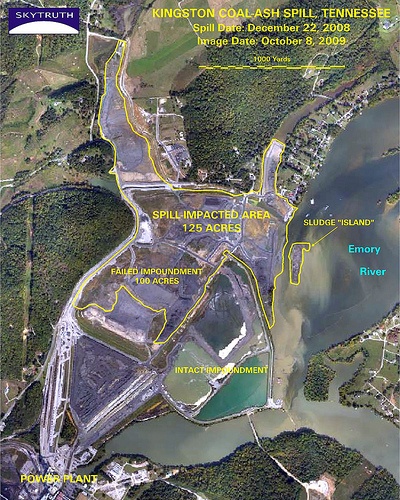Industry lobbies White House hard on coal ash regulation

Environmental advocates were disappointed last month when Environmental Protection Agency Administrator Lisa Jackson announced that her agency would miss the promised end-of-the-year deadline to release a proposed regulation of coal ash.
She blamed the delay on "the complexity of the analysis" -- but new details are emerging about the intense lobbying campaign the utility industry is engaged in to protect its financial interests.
The Wall Street Journal reported this past weekend on what it called a "flurry of industry meetings" held within the White House in an effort to fight back against regulations that would create logistical problems and potentially limit so-called "beneficial" uses of coal ash:
The office of President Barack Obama's regulatory czar, Cass Sunstein, has held nearly 20 meetings with industry groups since October to discuss the potential impact of proposed EPA rules to treat coal ash and other coal byproducts as hazardous waste, according to White House records. Mr. Sunstein directs the Office of Information and Regulatory Affairs within the White House Office of Management and Budget.
Watchdog groups say it is unusual for the OMB to insert itself so prominently, and so early, into the process. In this case, the EPA has yet to publish its proposed new regulations for coal ash, a step that would then open the door to public comment and hearings.
Utility executives are concerned that new rules designating coal ash as hazardous waste could add billions of dollars in new costs, as companies would be required to find safer ways to store the material than dangerous surface impoundments like the one that collapsed at the Tennessee Valley Authority's Kingston coal plant in eastern Tennessee a little over a year ago -- a disaster that put coal ash regulation on the national agenda.
Besides presenting a physical hazard to communities because of the way it's stored, coal ash contains toxic metals including arsenic as well as radioactive elements and cancer-causing combustion byproducts that can leach out of impoundments and landfills and contaminate water supplies. A 2007 EPA report documented dozens of places nationwide where environmental damage from coal ash has been proven and identified scores of other potential damage cases.
It's not only the way that utilities store coal ash that's at stake in the rule-making. Should the new regulation broadly define coal ash as hazardous waste, it could put a crimp in utilities' efforts to promote so-called "beneficial uses" of the material in consumer products like wallboard, as structural fill for construction projects and as a soil amendment for farm crops -- all uses that are currently permitted and even encouraged under federal law.
Of the 131 million tons of coal combustion waste generated by U.S. utilities in 2007, about 40% went toward so-called "beneficial uses" and the rest into surface impoundments and landfills, according to a recent report by the Government Accountability Office.
There is currently no federal standard regulating storage and use of coal ash. Depending on how far-reaching the proposed rule is, a spokesperson for the industry group Electric Power Research Institute told the Wall Street Journal, as many as 250 to 350 coal units could be shut down. However, environmentalists say such dramatic claims are scare tactics aimed at discouraging the Obama administration from taking needed steps to protect the public.
Tags
Sue Sturgis
Sue is the former editorial director of Facing South and the Institute for Southern Studies.
